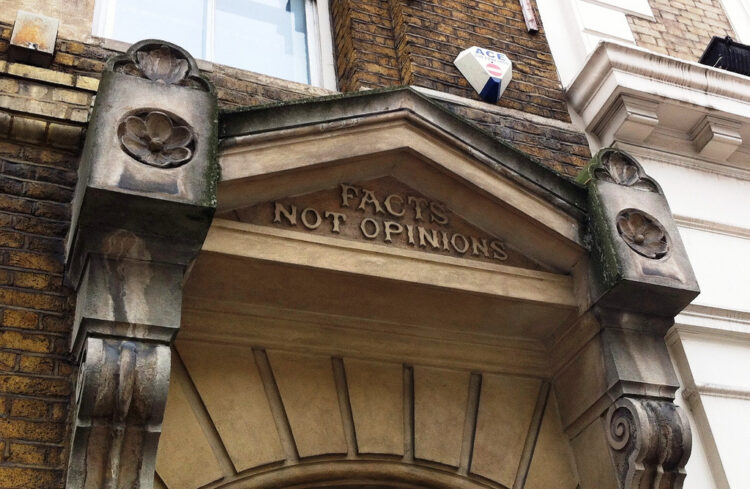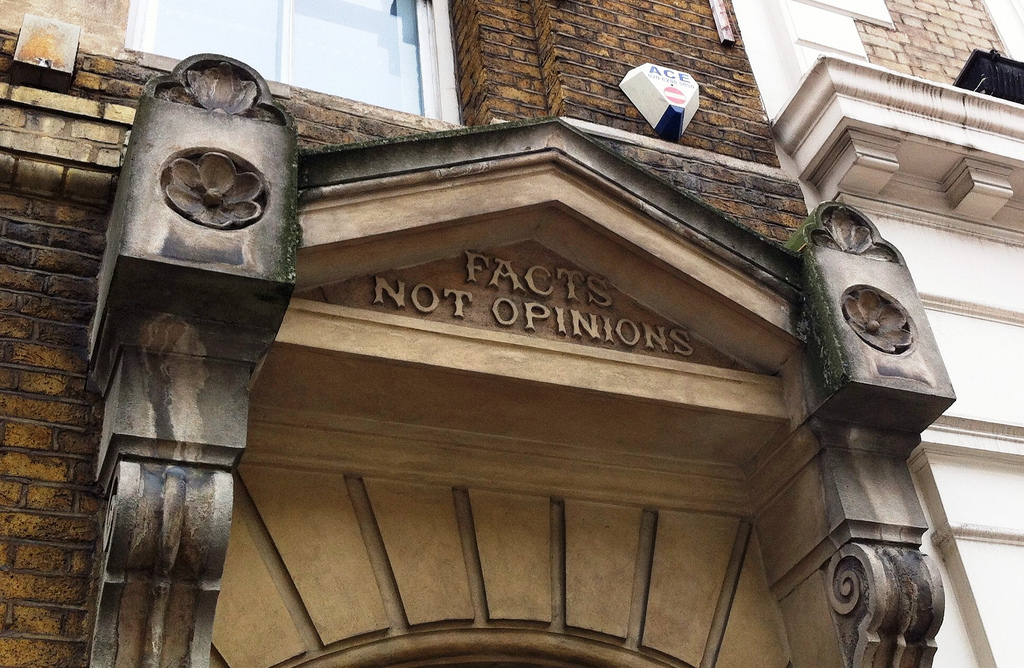Incorrect information travels fast and is enabled by our crowdsourced, social media-fueled world…History and facts are more vulnerable than ever.
At the height of Hurricane Sandy, I became transfixed with following the real-time progress of the storm. From Google News to Yahoo! to The Weather Channel, I was inundated with updates from across the country. One of my favorite sources was Facebook, as my friends shared status updates that gave me perspective on what was happening. Or, in some cases, what they believed to be happening but wasn’t. I refer to several photos that circulated faster than the hurricane’s winds. One of particular note was three guards holding their own against a fierce torrent of wind and rain at the Tomb of the Unknown Soldier. The picture is real; however, it was taken in September during a bad rain storm, weeks before Sandy even formed. And now it was being incorrectly associated with a tropical system.
As information can travel at the blink of an eye, so can misinformation. Or as Mark Twain once said, “A lie will go ‘round the world while truth is pulling its boots on.” Actually, I should’ve said that most people attribute this quote to Twain. It was actually said by a man named C.H Spurgeon, who attributed it as an old proverb. The mangling of truth knows no bounds. But today, truths and lies have the same value and can travel at the same speeds, often without differentiation, and both can equally shape historical events and create multiple realities. All of these views are valid insomuch as they represent an individual’s experience with events.
Incorrect digital artifacts are a big reality in today’s information society. Flying into Detroit one morning, I did what almost all fliers these days do. Upon landing, I turned on my phone and tapped into social media, in this case Facebook, to update my status. The phone had a difficult time locating my position and thought I was in New Boston, Michigan, an unincorporated township adjacent to Romulus, the town in which the airport is actually located. When I went to check in, over 2,000 people had also checked into the airport in New Boston, thereby creating a new digital reality. After all, 2,000 people can’t be wrong, right? I can imagine historians thousands of years hence discussing whether the airport was in Romulus or New Boston. What would they conclude?
We hope professional journalists, trained purveyors of truth, would help to deter misinformation. And for the most part, they do. The reason I know about the Tomb of the Unknown Soldier photo is because of another reporter’s story on Mashable. But journalists get things wrong, too, and when they do, the damage can be significant. In 2006, famed NFL player Jerome Bettis played his last game in his hometown of Detroit at the Super Bowl. In honor of his accomplishments, the city decided to give him a key to the city. A reporter from a small paper in Pennsylvania asked Jerome how he felt to be in an exclusive club, one that included Saddam Hussein. Jerome made a joke, and an AP writer at the news conference picked up the exchange, included it in a story he wrote, and within 24 hours, the story had gone global. Jerome Bettis and Saddam Hussein were one of only a handful of people (some articles even suggested a number as low as four) to ever receive a key to the city of Detroit. It was on the Today Show. CNN. FoxNews. The New York Times. I worked for ESPN at the time and decided to check the facts. I called the mayor’s office and was informed I was the only person to call and confirm the story. Saddam Hussein and Jerome Bettis had indeed received keys to the city. But Detroit had given away hundreds of keys to a variety of people, and Saddam received his in 1982, a time of prolific key offerings. So where did the reporter get the idea the keys were limited? Apparently, at the time Jerome Bettis received his key, Mayor Kwame Kilpatrick had decided to limit the awarding of the keys because of their cost and because they were given away so frequently that their perceived value was diminished. Two facts collided and traveled the world.
Big deal, I can hear you saying. It’s a minor fact. And the gut of the story is true; Saddam and Jerome are part of a club. Correct. But I was one reporter for ESPN. Did other reporters also follow up on the fact? Did anyone print a retraction? No. The story was less sexy without the exclusivity. And if you type in Jerome Bettis and Saddam Hussein in Google, you still see stories with incorrect information. Part of journalism is a historical record of facts. I am not naïve. I know that, throughout history, information has been wrong, and institutions with agendas have changed facts. The issue with today’s crowdsourced world is that we’re actually getting closer to one viewpoint, and often that viewpoint is tainted.
I present these facts as a warning, and as a suggestion. In this digital age, there are no greater skill sets than a healthy dose of skepticism, common sense and basic research abilities. Truth is comprised of attribution, perspective, context and facts. Any of these can be wrong. And one cannot be too inquisitive. We build our realities one truth at a time. Shouldn’t we, at the very least, do our best to build the very best one?
Image credit: CC by yellow book





